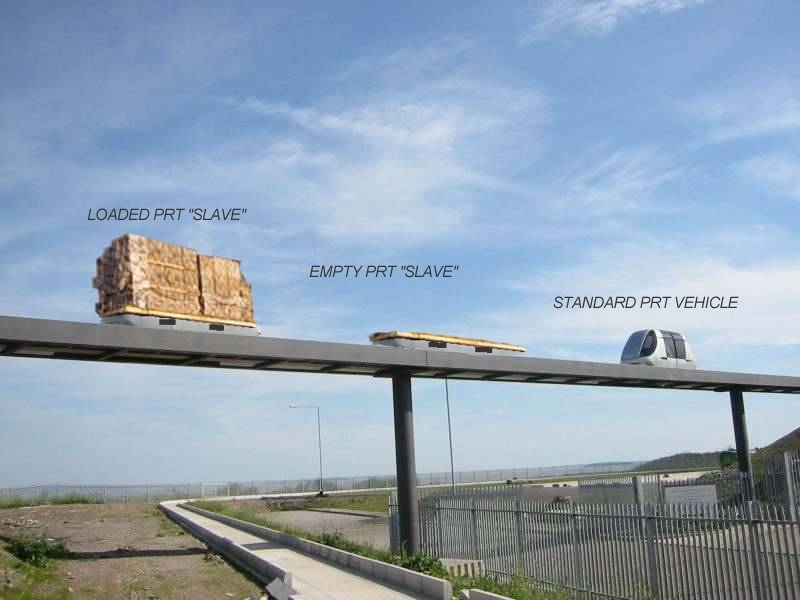Using High-Voltage lines for Rail-Trucks in Siberia
Carl Henderson (SD)
http://www.darkroastedblend.com/2007/10/cool-road-rail-vehicles.html
"Using High-Voltage lines for Rail-Trucks in Siberia
We are trying to be open-minded about this new transportation concept
from Russia, but still have hard time believing they really mean it.
Yet, according to this respected source, "Wire"-balancing trucks could
be soon a reality in Siberia, and the similar 3 kilometers system is
already under construction in Kiev.
The Road/Rail converted trucks will travel between existing high-voltage
towers high above the frozen landscape, avoiding the costs associated
with building on permafrost and huge snow-removal expenses.
Eventually the wire-transport system will get their own custom-designed
cars, capable of reaching the speeds of 500 km/h."
Jerry Roane
Hey what's the deal!!! They ripped off my patented idea. The circular
cross section of that image clearly violates my patent if they were in
the US China or Europe. I can see how they can claim the speed with
that shape and others similar to it. Maybe if Russia kicks our butts
with our own ideas they may catch on here.
Jerry Roane (been off line for a few days. Sorry for the pileup of
emails.)
Sergey Prokhorenko
Sergey Prokhorenko
sergeypr...@yahoo.com.au
Sergey Prokhorenko
pallet dimensions:
ULTra Vehicle's Body Unit Load Device LD3
Length (m.) 3.695 2.010
Width (m.) 1.455 1.530
Height (m.) 1.610 1.630
Gross weight (kg.) 1200 1588
Sergey Prokhorenko
sergeypr...@yahoo.com.au
Eric Baumgartner
- These flat PRT platforms have all the drive components as passenger PRT vehicles and forklift slots through the chassis
- SLAVES are stored at PRT serviced loading docks on standard pallet racking on 24" centers or simply stacked on top of each other up to 5 high.
- When needed, SLAVES are unstacked using a forklift and placed on the PRT track.
- Loads are placed on the SLAVE by hand or utilizing pallets loaded by pallet jacks or a forklift.
- Loads are secured and programmed to their destination
- Automatic sensors measure weight and cost to destination based upon distance, load and current demand on PRT network. Peak rates are higher than late night deliveries.
- Load moves along network and will only stop at dedicated loading docks to be unloaded.

eri...@shaw.ca
Kirston Henderson
I think that cargo is an excellent idea for PRT to utilize off peak availability of PRT track capacity.
Imagine if you will:
PRT cargo "SLAVES" SLAVES = Standardized Loading Automated Vehicles
SLAVES can be used to move palletized shipments of goods, luggage, recyclables, garbage containers, mail and any shipment up to 1,200 pounds. The more types of usage beyond "transit" will make PRT more marketable.
- These flat PRT platforms have all the drive components as passenger PRT vehicles and forklift slots through the chassis
- SLAVES are stored at PRT serviced loading docks on standard pallet racking on 24" centers or simply stacked on top of each other up to 5 high.
- When needed, SLAVES are unstacked using a forklift and placed on the PRT track.
- Loads are placed on the SLAVE by hand or utilizing pallets loaded by pallet jacks or a forklift.
- Loads are secured and programmed to their destination
- Automatic sensors measure weight and cost to destination based upon distance, load and current demand on PRT network. Peak rates are higher than late night deliveries.
- Load moves along network and will only stop at dedicated loading docks to be unloaded.
I did a graphic a few years back to show how this could be done. Thanks to ATS for allowing me to use their image at that time.
I fully agree with what you say and hate to look as if I am promoting our product, but if you look at the simulation photo at the following url, you will see part of what our company is proposing for our PRT-size MicroRail system that we believe will eventually provide a common guideway in large cities to move both ultralight, scheduled mass-transit trains, dualmode CargoTrams, automated cargo carriers, small, dualmode electric cars and yes, eventually PRT cars:
http://megarail.com/MicroRail_Urban_Transit/Urban_Cargo/
By the way, the illustration and the related description found at the above url has been posted on our web site for the last two or three years, so it is not something that we just dreamed up. As a matter of fact, we have a US patent on the type of cargo container carriage system depicted in the illustration.
The cargocarrier illustrated carries a small, PRT-size, cargo container that is enclosed to protect the palleted cargo inside from weather. The cargo containers may be lifted on and off of the carrier with standard forklifts and the cargo pallets inside may be removed and other cargo loaded by those same forklifts. The aerodynamic end caps fold down nearly flat with the container support surface so as to impose minimum aerodynamic drag. The small containers are slightly over 8-feet long and multiple containers may be loaded aboard standard flatbed trucks. Two of these same containers may also be loaded aboard one high-speed MegaRail® container carrier.
We have also examined the possibility of unmanned automated loading and unloading docks for these containers where they can be later removed or empty or full containers be loaded for shipment on the same type of cargo carrier vehicle.
I believe that the cargo carriage method described above meets all of the cargo transport desires that have been stated in recent post to this group plus some that have not, but that we believe are also important.
By the way, these small containers can carry a maximum load of 3,000-lbs.
Kirston Henderson
MegaRail®
